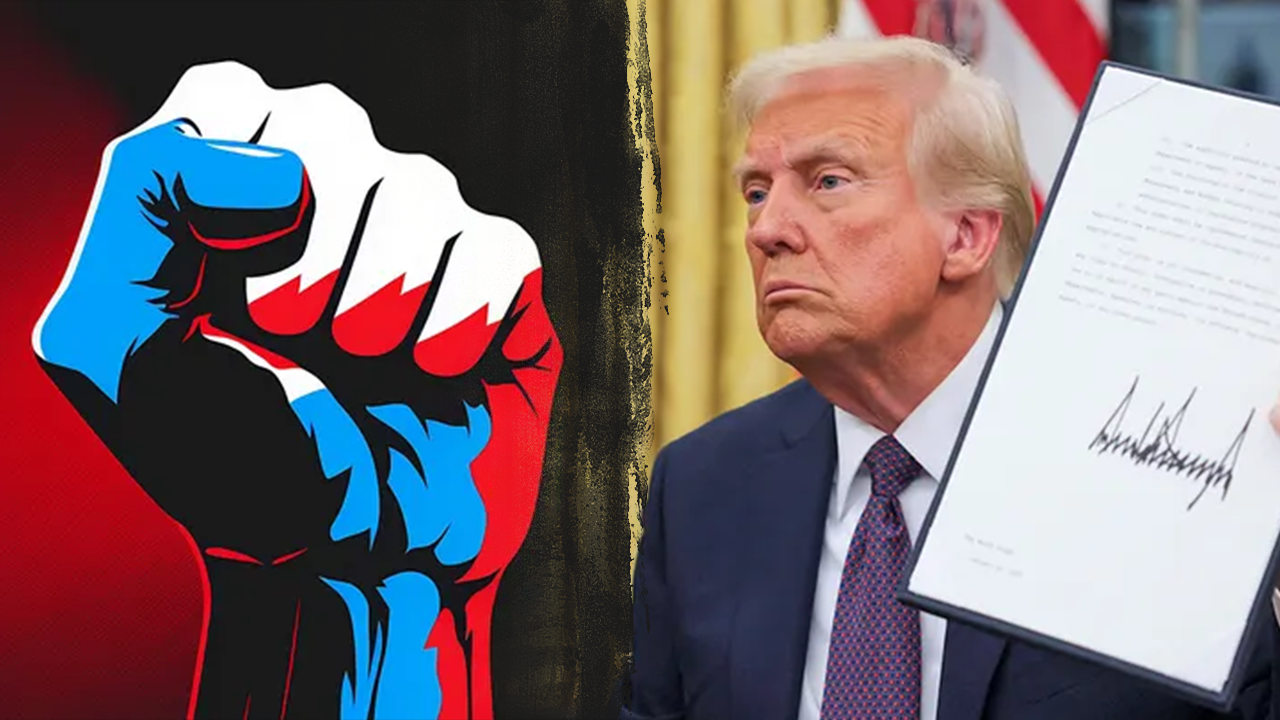EMILY’s List founder Ellen Malcolm's advice for getting through one of the bleakest years in memory for American women
A week before President Donald Trump was set to be sworn-in in front of a scaled-down crowd at the Capitol Rotunda, Washington D.C. felt completely still. Eight years earlier, the city had been electric with dissent, planes and busloads full of protesters already arriving, eager to demonstrate their displeasure with the incoming administration. This time around, there was no Disrupt J20, and only a fraction of the crowd that coursed through the capital in 2017 materialized for this year’s Women’s March. Trump’s opposition was still so dejected over the outcome of the 2024 election, it seemed they could barely muster the energy to protest.
Kamala Harris’ loss to the now-adjudicated sexual abuser (and champion of accused sexual abusers) was a particularly demoralizing one for many women. It represented both an emphatic affirmation that Trump’s upset victory over the first female nominee to lead a major party ticket was no fluke, and that his work to strip American women of their constitutional right to an abortion was not disqualifying, at least to a plurality of voters. Living through the last eight years — and staring down the next four — it’s easy to feel pessimistic about the position American women are in today. And yet it could be worse. Just ask Ellen Malcolm.
Malcolm lived through the failed effort to pass the Equal Rights Amendment, the first failed effort to elect a female vice president, the infuriating spectacle of Clarence Thomas’ confirmation hearings, two of Hillary Clinton’s failed presidential campaigns, and many other painful electoral defeats — and, all along the way, she managed to continue building women’s political power. It is not an exaggeration to say that no one, living or dead, deserves more credit for the progress that women have made, in terms of their political representation, than Malcolm, the founder and longtime president of EMILY’s List.
Today, there are 151 women in Congress. One-quarter of U.S. senators are women, and roughly 30 percent of lawmakers in the House. Four decades ago, when Malcolm embarked on her political project, not a single Democratic woman had ever been elected to the Senate in her own right, and women (split evenly between Democrats and Republicans) accounted for about 5 percent of representatives in the U.S. House.
Editor’s picks
“The way it was, was women were getting shit nowhere,” Malcolm, tells me, reflecting on the political climate of the 1980s over lunch at the Tabard Inn, where she and a half dozen young female political operatives founded the EMILY’s List 42 years ago. “Nobody took women candidates seriously.”
The central issue, as Malcolm and her colleagues saw it, was the fact that the men who ran the Democratic Party had no confidence that female candidates could compete financially. “They were caught in this vicious circle,” she says. “They would go to the old boys and say, ‘I’m a state legislator, and I want to run for Congress, a seat has opened up.’ And they’d say, ‘Well, you can’t raise the money, so we’re not going to give you any.’ Okay, fine, you smoke your cigar and look smart, and I’ll starve to death.”
Their solution was to start soliciting early donations for Democratic women running for office. They called the group EMILY’s List, an acronym for “Early Money Is Like Yeast.” (Get it? It helps the dough rise.) “I wasn’t very experienced in politics when we began, and I think if I knew then what I know now, I would have thought, ‘Oh, forget it. This ain’t gonna happen,’” Malcolm says.
Just a few weeks shy of 78, Malcolm rarely does interviews. She stepped back as public face of EMILY’s List in 2010, not long after Clinton’s defeat in the 2008 primary. “It broke my heart,” she says. But one of the lessons she’s taken in, after a half a century in politics, is that the most devastating defeats often precede the biggest leaps in progress.
Related Content
“It’s not one great, big ‘Hooray! We’ve won. Now we don’t have to do this again.’ No, no, no, no,” she says. “It ebbs and flows… You make a big burst forward. Then it gets slow. You lose. That goes on for a while, and then you get another opportunity, and you burst forward.”
Take 1992, remembered as “the year of the woman” because so many voters, furious over the treatment Anita Hill received before an all-male Senate Judiciary Committee during Supreme Court Justice Clarence Thomas’ confirmation process, turned out to elect female candidates: Four Democratic women were elected to the U.S. Senate that year, and 21 new Democratic women to the House. EMILY’s List, which raised $10 million that cycle, became the single-biggest funder of federal campaigns in the United States that year.
But 1992 was followed two years later by one of Democrats’ biggest electoral wipeouts, the first time the party had lost control of House of Representatives since 1955.
Malcolm remembers 1994, though, as the year that Democratic leadership finally recognized the power of women as voters, donors, and candidates. There is a graph charting the divergence between Democratic women’s representation in Congress, and Republican women’s. The two lines, roughly even through 1992, sharply diverge after that point. The line representing Democratic women shoots upward at a sharp angle, while the line representing Republican women plods along, rising and falling for just modest gain over time. It’s the image Malcolm says she wants engraved on her tombstone.
“The ERA was a terrible loss, but it politicized a lot of women. [Geraldine] Ferraro was a terrible loss, but it showed us that there was a potential for fundraising from women who were excited about electing a woman,” Malcolm says. “You have to have a long view if you’re going to participate in social change. You will burn out. You will give up. Nothing will happen unless you understand that sometimes we lose and sometimes we win, and in that arc of change, we’re going to make progress. EMILY’s List is a case study of that concept: Women were 5 percent of the Democratic caucus. We are now 44 percent of the Democratic caucus.”
But it’s not just about representation, she is quick to emphasize. “It’s the changes to the agenda that have taken place because of the women we elected. It was women that wanted family medical leave, it was women voters that wanted health care reform,” she says. “The whole legislative agenda has shifted because women are now considered important in politics.”
After Harris’ loss,The New York Times ran a headline that wondered aloud whether the United State would ever be ready for a woman president. The piece concluded, quoting Bill Clinton and Lindsey Graham: Maybe — if it’s a Republican. Malcolm, whose life’s work has been devoted to electing Democratic women, bristled at the implication. “I suppose it could be, but I gotta tell you, I don’t know where she’s going to come from, because the Republican Party could care less about putting women into offices,” she says. “It’s why they’re going backwards.”
Women account for just 14 percent of the Republican congressional caucus this year, a figure that is down from the last cycle. For the first time in a decade and a half, the total number of women in Congress declined in 2025 because the GOP caucus lost women. Even the Republican women who stayed lost power within their conference: for the first time in a decade, every single elected committee chair position went to a man. (The sole woman in GOP leadership is Rep. Virginia Foxx (R-N.C.), chair of the House Rules committee — a position that is appointed by Speaker Mike Johnson.)
“Equal representation is a non-partisan issue, but it has become a partisan problem,” Debbie Walsh, the director of the Center for American Women in Politics, wrote in a report assessing women’s representation in Congress this year. “To achieve gender parity in elected offices at every level, both parties must do the necessary, intentional work to recruit, support, and elect women.”
It’s not healthy for the Republican Party, or for the country, Malcolm says, that the GOP has so few women in its ranks. “One of the reasons I want there to be more Republican women is because I’m hoping they’ll have enough of them, and they can start speaking up more about things that happen to women, and that will maybe help us find some middle ground to make progress,” Malcolm says. “They have extreme positions, and who are the voices that are going to moderate that? It’s not going to be you and me.”
When she was in college, Malcolm was an experimental psychology major. She worked with rats. “What I learned was, if you put them in a maze, the rat will figure out how to get to the food. It will go down the path,” she says. “But if you take him and he can go equidistant — either to the right or left — he won’t know what to do, and he’ll just stand there. Paralyzed.” It’s not a bad analogy for the position Democrats presently find themselves in. But, Malcolm, for her part, is confident the party will find its way out.
“People are shell-shocked, and what we need to do is say, ‘You’re angry, and you have every reason to be, and there’s something you can do about it.’ I believe that the leaders that are going to get us out of this mess right now are women, because it’s the women that are going to understand, powerfully, what it means to have a far-right agenda. They’re going to understand who gets hurt, and they’re going to show us a way out,” she says. “I think women are going to come out of this in much better shape… It’s doable, but it’s gonna take all of us working together. It’s not a time for the faint-hearted, and it’s not a time to give up.”

 2 hours ago
3
2 hours ago
3
















.png)

.png)
.png)
.png)













 English (US) ·
English (US) ·  Hindi (IN) ·
Hindi (IN) ·